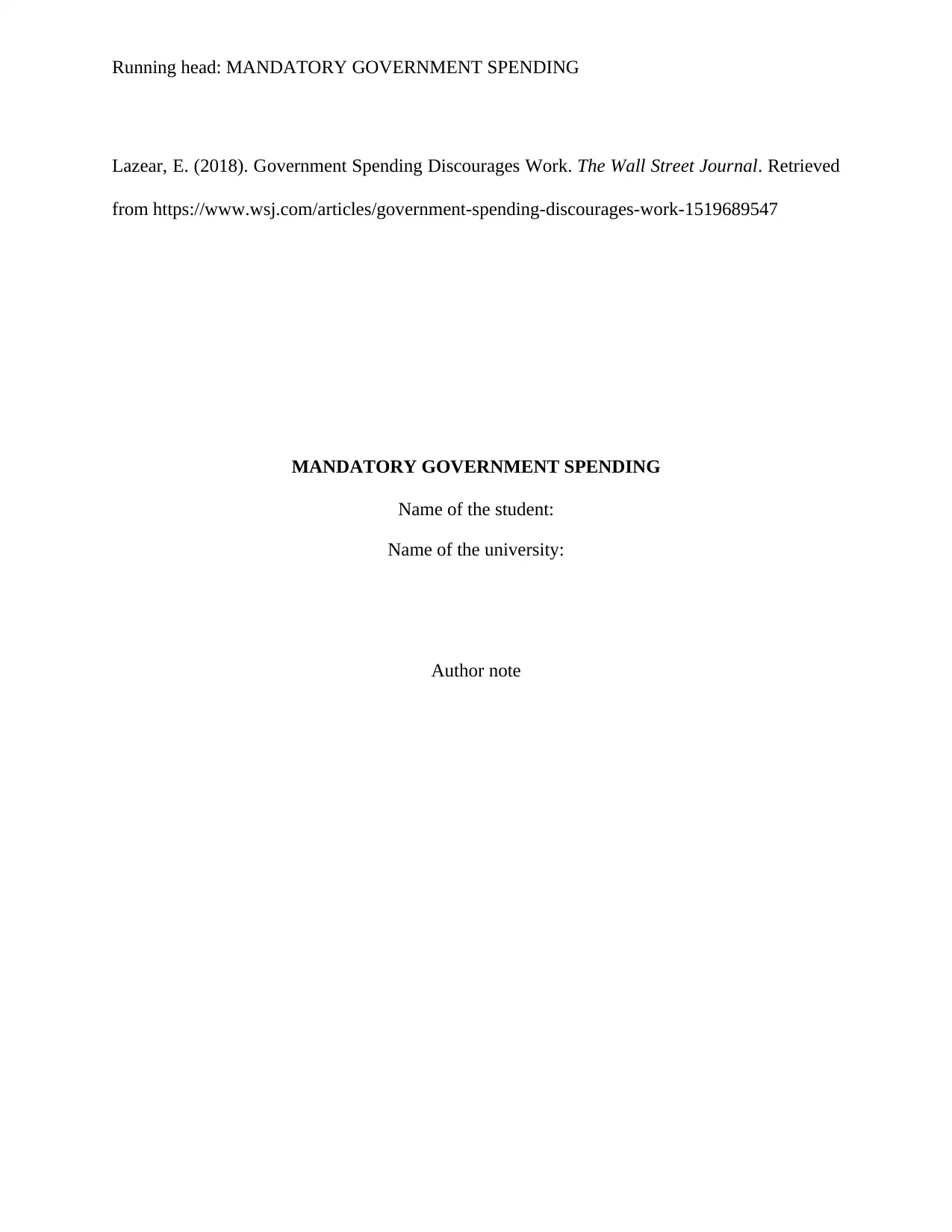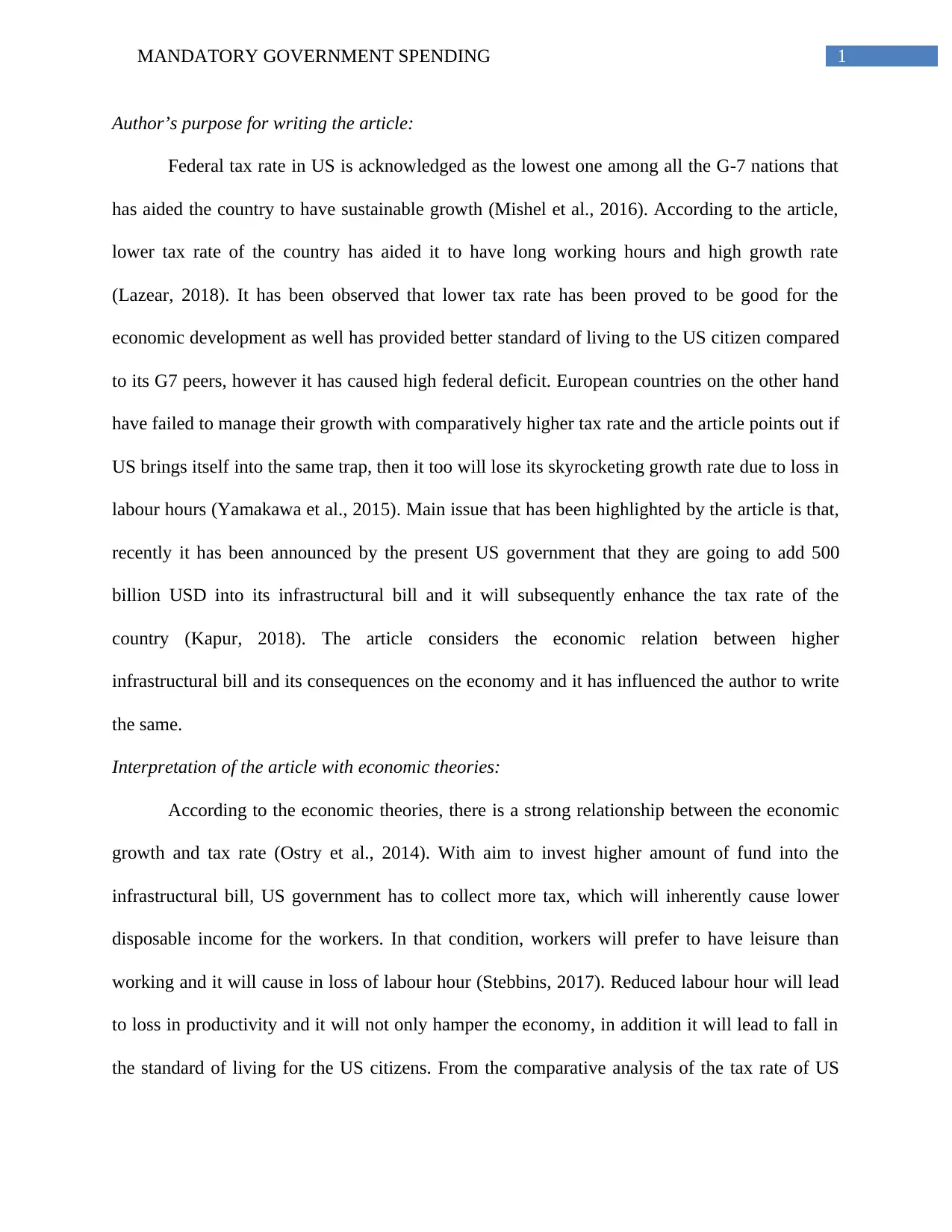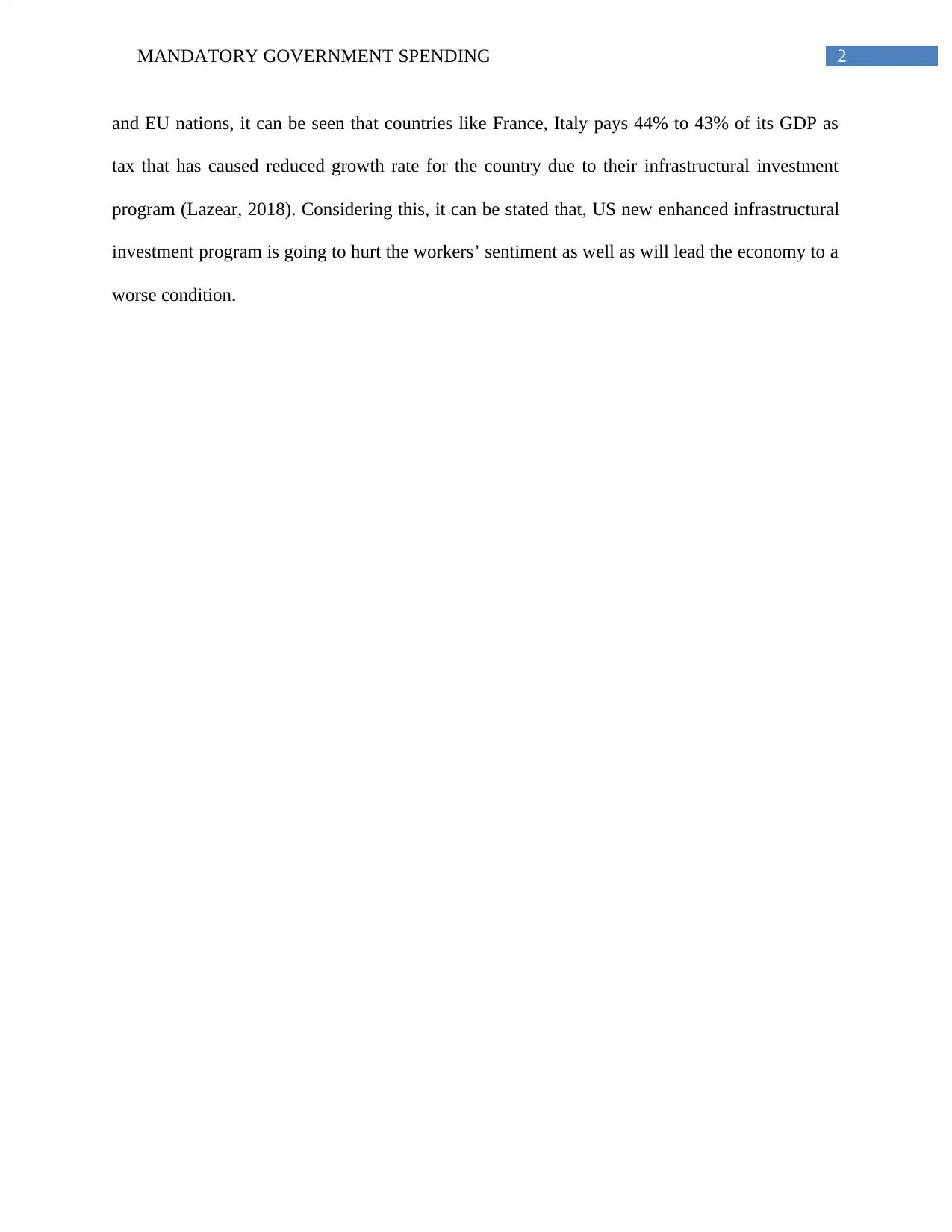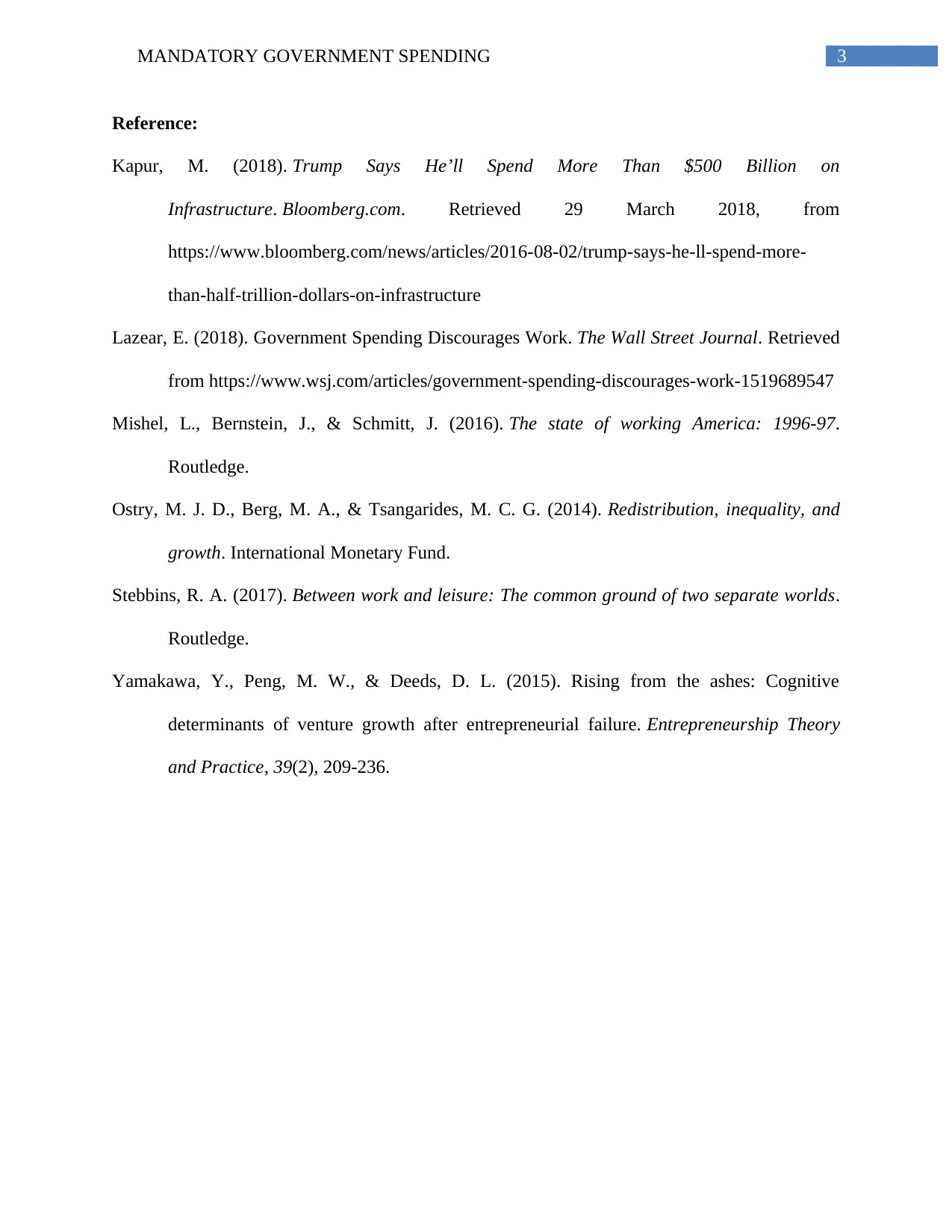ECON 214: Analyzing Mandatory Government Spending via WSJ Article
VerifiedAdded on 2023/06/14
|4
|705
|138
Report
AI Summary
This report provides an analysis of an article from The Wall Street Journal concerning mandatory government spending, as part of an ECON 214 assignment. The author examines the article's claim that government spending discourages work, referencing the potential impact of increased infrastructure spending on tax rates and labor hours. The analysis incorporates economic theories, comparing the US tax system with those of European nations and considering the effects of higher taxes on disposable income and productivity. The report concludes that increased government spending could negatively affect workers' sentiment and the overall economy, referencing the potential for reduced growth due to infrastructural investment programs.
1 out of 4











![[object Object]](/_next/static/media/star-bottom.7253800d.svg)